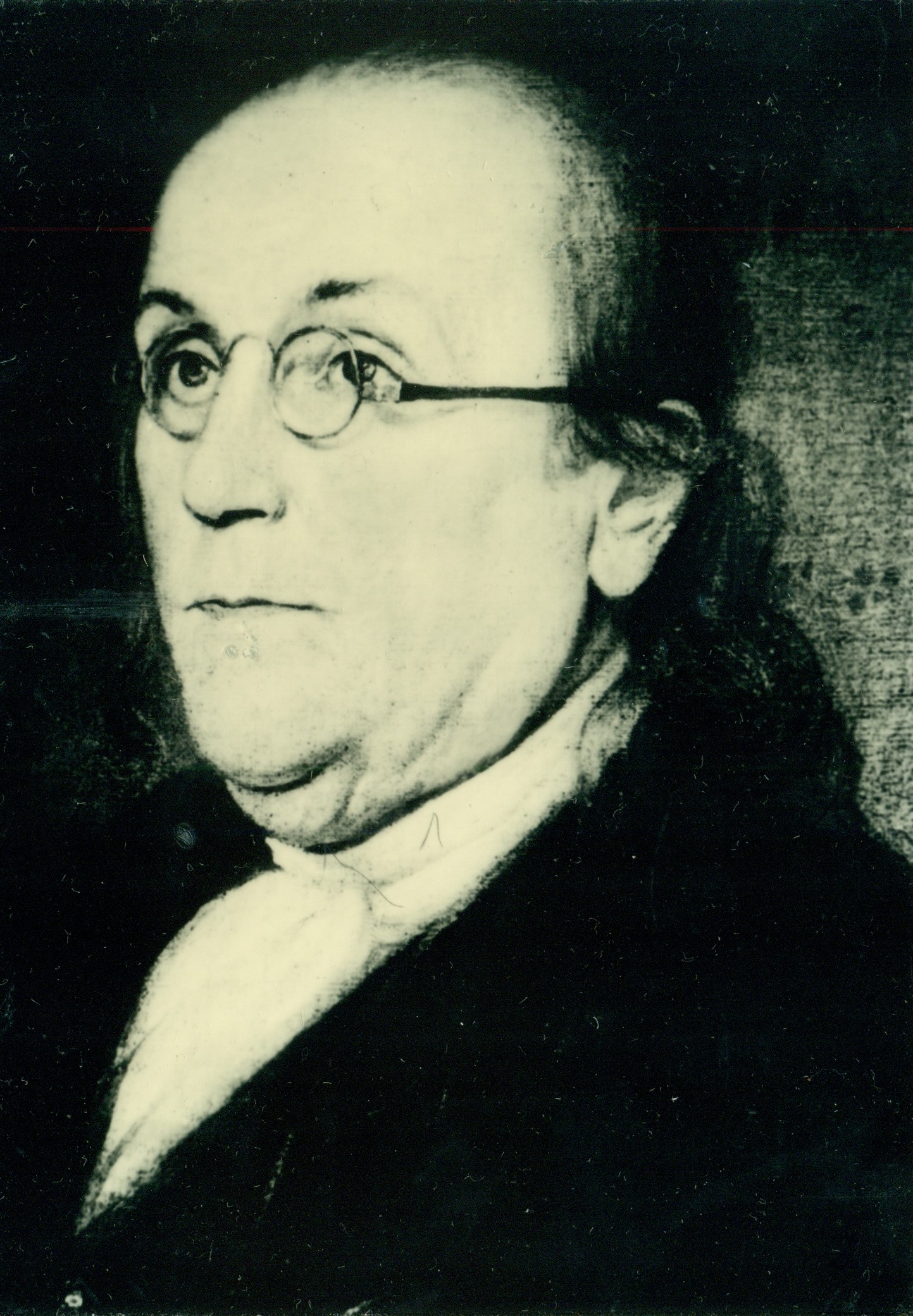
Benjamin Franklin (USA)
Honor Contributor (1968)
FOR THE RECORD: Benjamin Franklin was a competent swim coach and teacher; he advised on water safety, lifeboat rescue escape from shipwrecks, and the advisability of universal learn-to-swim classes.
One of United States first “ornamental swimmers”, on a Thames River excursion in 1726, he swam from Chelsea to Blackfriars (3½ miles) “performing on the way many feats of activity, both upon and under water, that surprised and pleased those to whom they were novelties”.
“When I was a boy, I made two oval palettes, each about 10″ long and 6″ broad, with a hole for the thumb in order to retain it fast in the palm of my hand. They much resembled a painter’s palette. In swimming, I pushed the edges of these forward and I struck the water with their flat surfaces as I drew them back. I remember I swam faster by means of these palettes, but they fatigued my wrists. I also fitted to the soles of my feet a kind of sandals, but I was not satisfied with them because I observed that the stroke is partly given by the inside of the feet and the ankles, and not entirely with the soles of the feet. When I was a boy, I amused myself one day with flying a paper kite, and approaching the bank of a pond which was near a mile broad, I tied the string to a stake, and the kite ascended to a very considerable height above the pond while I was swimming. In a little time being desirous of amusing myself with my kite and enjoying at the same time the pleasure of swimming, I returned; and, loosing from the stake the string with the little stick which was fastened to it, went again into the water where I found that, lying on my back and holding the stick in my hands, I was drawn along the surface of the water in a very agreeable manner. Having then engaged another boy to carry my clothes round the pond, to a place which I pointed out to him on the other side, I began to cross the pond with my kite, which carried me quite over without the least fatigue, and with the greatest pleasure imaginable. I was only obliged occasionally to halt a little in my course, and resist its progress, when it appeared that by following too quick, I lowered the kite too much; by doing which I occasionally made it rise again.”
In addition to being our first kite-man, “water skier” and one of the first to use flippers (Leonardo da Vinci has prior claim here) Franklin was one of our first marathon and ornamental “synchronized” swimmer. On a Thames River excursion in 1726, Franklin wrote: “At the request of the company, I stripped and leaped in the river, and swam from near Chelsea to Blackfriars (3 1/2 miles) performing on the way many feats of activity, both upon and under water, that surprised and pleased those to whom they were novelties. I had from a child been ever delighted with this exercise, had studied and practiced all Thevenot’s motions and positions, added some of my own, aiming at graceful and easy as well as useful. All these I took occasion of exhibiting to the company, and was much flattered by their admiration.”
Franklin, an early oceanographer, also charted and measured the Gulf stream, advised on using it for America to Europe speed packet crossings, avoiding it on return. He advised on water safety, lifeboat rescue escape from shipwrecks, sea anchors and even on the advisability of universal learn-to-swim classes for peace of mind and safety in modern life.
” ‘Tis supposed that every parent would be glad to have their children skilled in swimming, if it might be learnt in a place chosen for its safety and under the eye of a careful person . . .’tis some advantage besides, to be free from the slavish terrors many of those feel who cannot swim, when they are obliged to be on the water even in crossing a ferry.”
Franklin was also a competent coach and teacher. He taught his friend Wygate and a friend to swim “at twice going into the river” but turned down an offer by Sir William Wyndham to open the first American swim school in England. He was homesick and returned to Philadelphia where among other things, he proposed that all commonwealth schools should have swimming programs.
